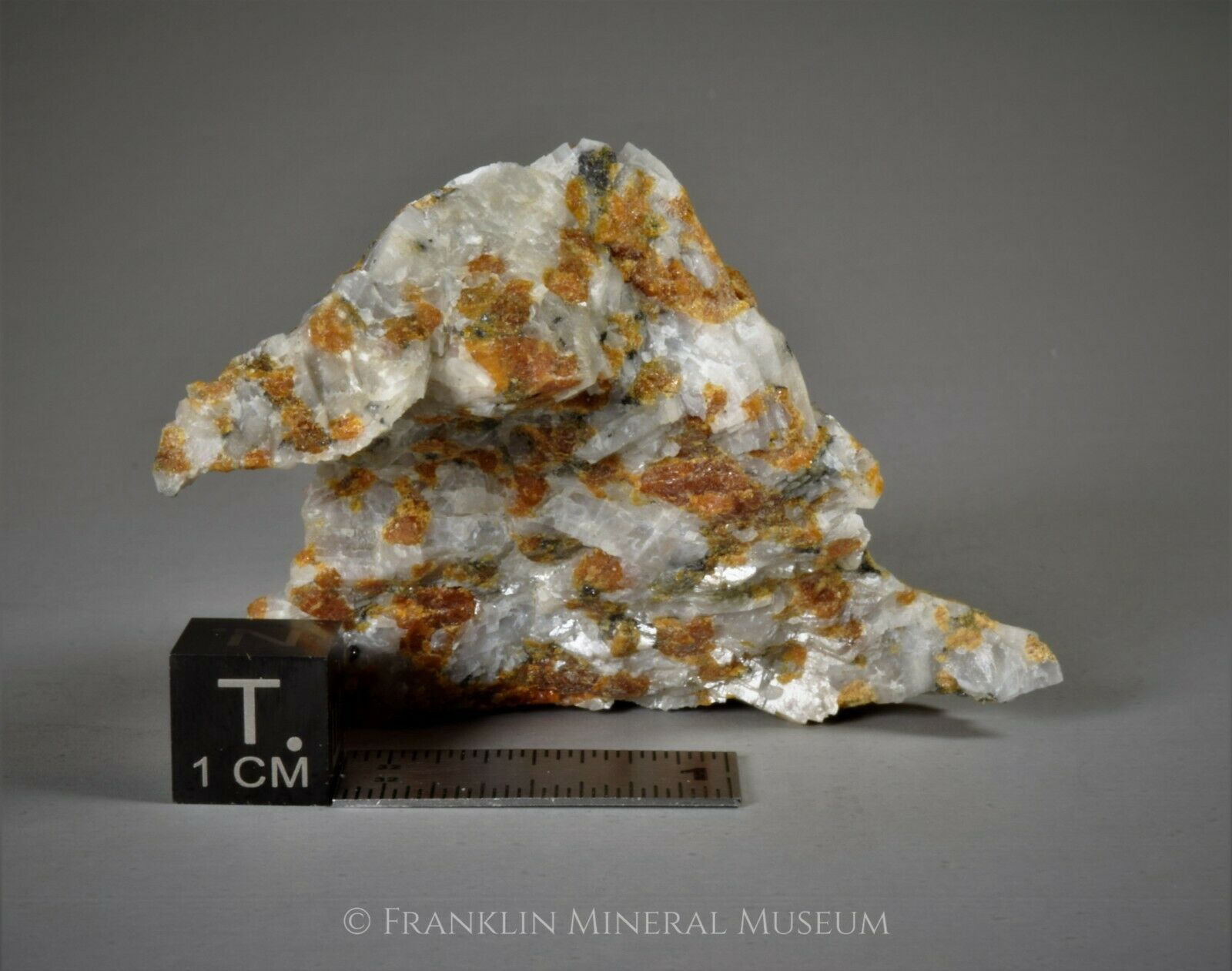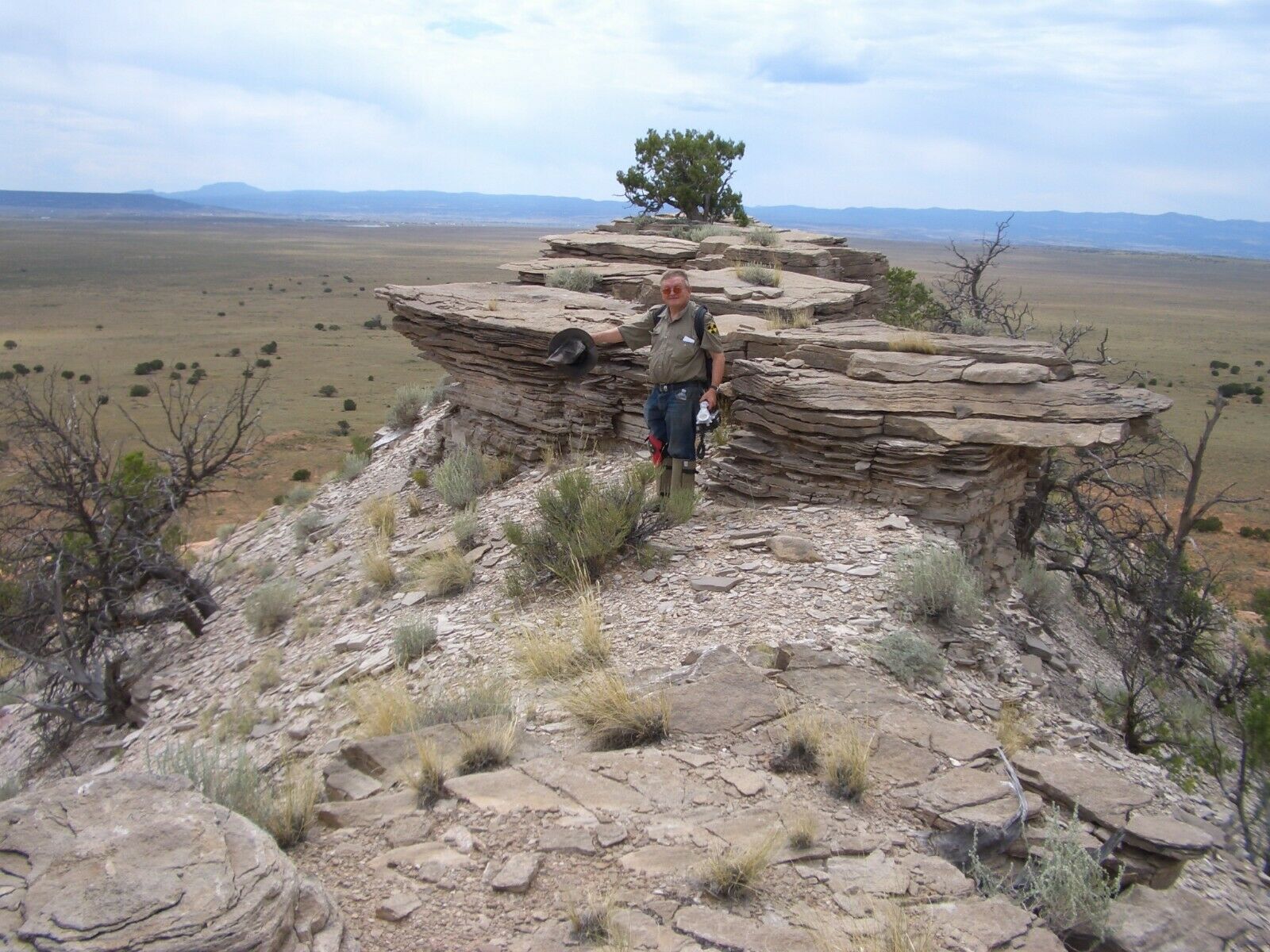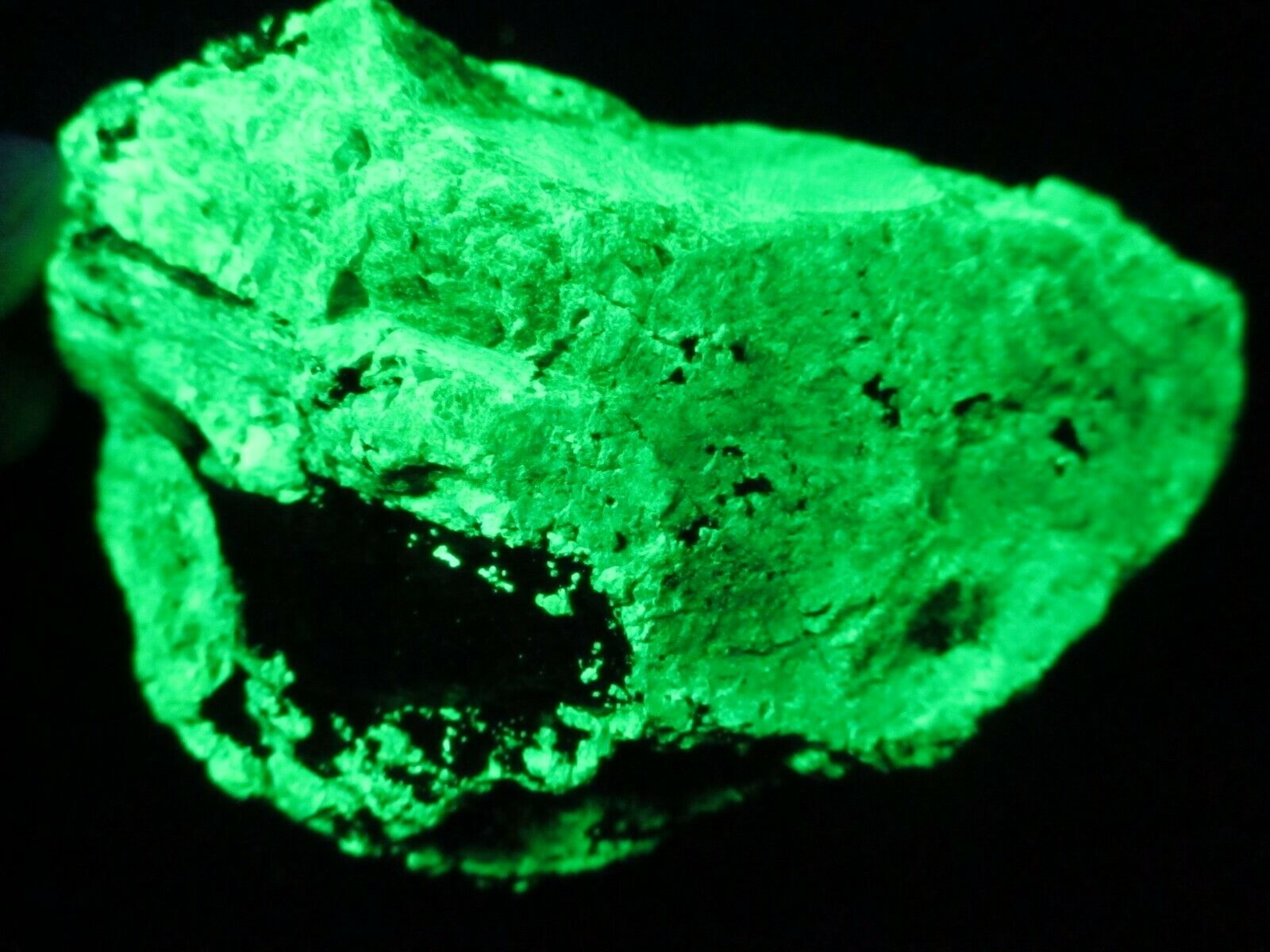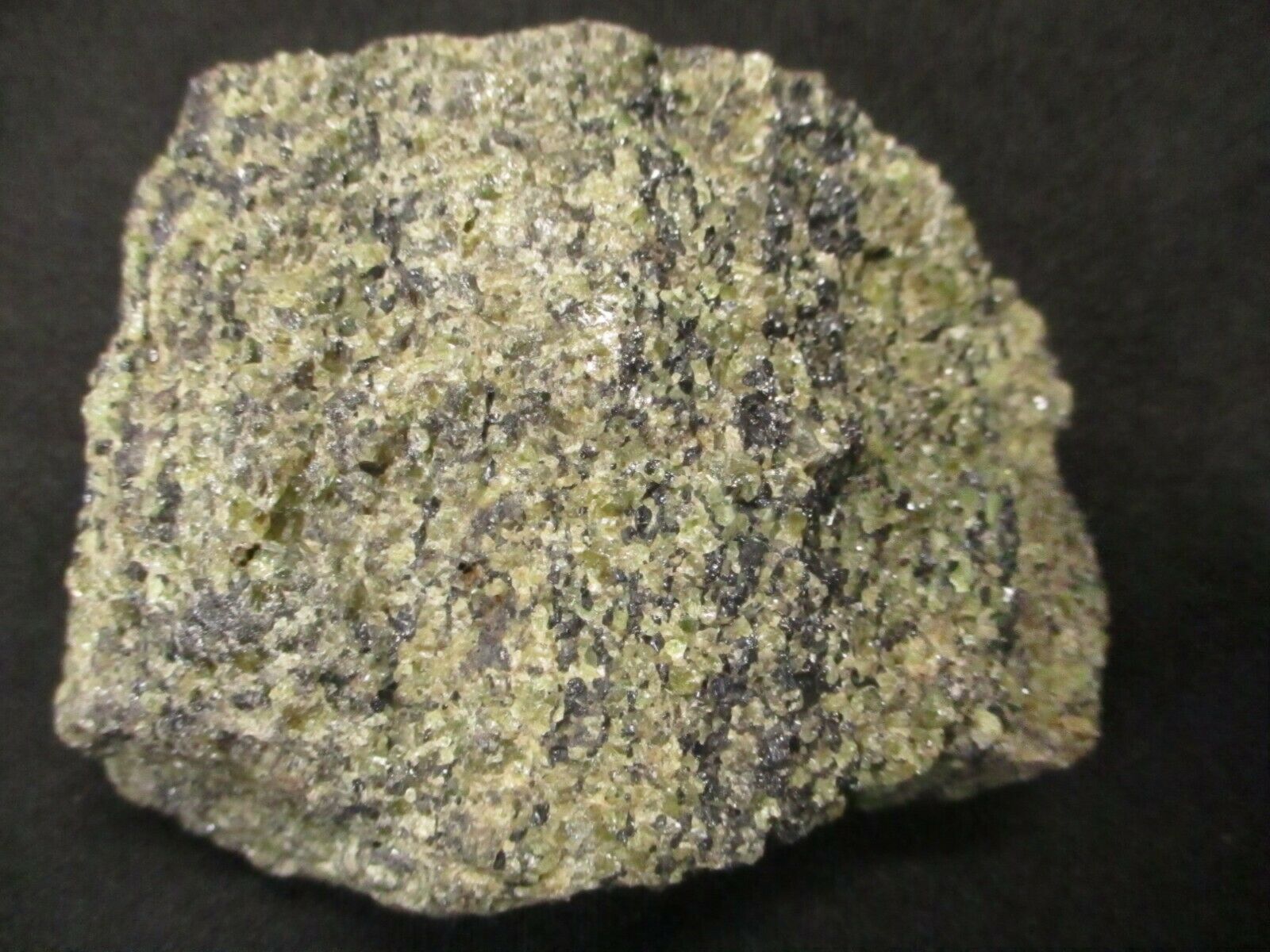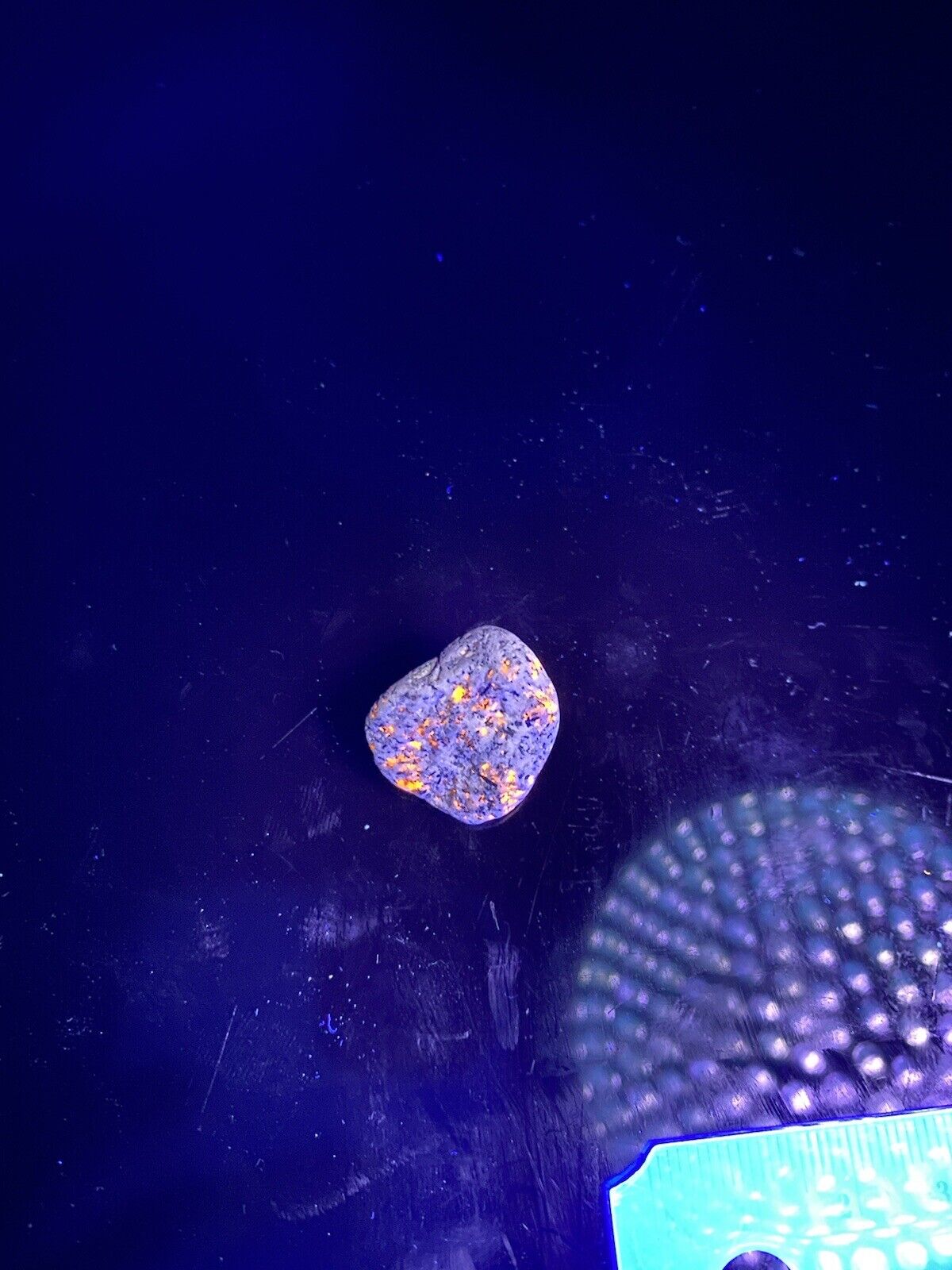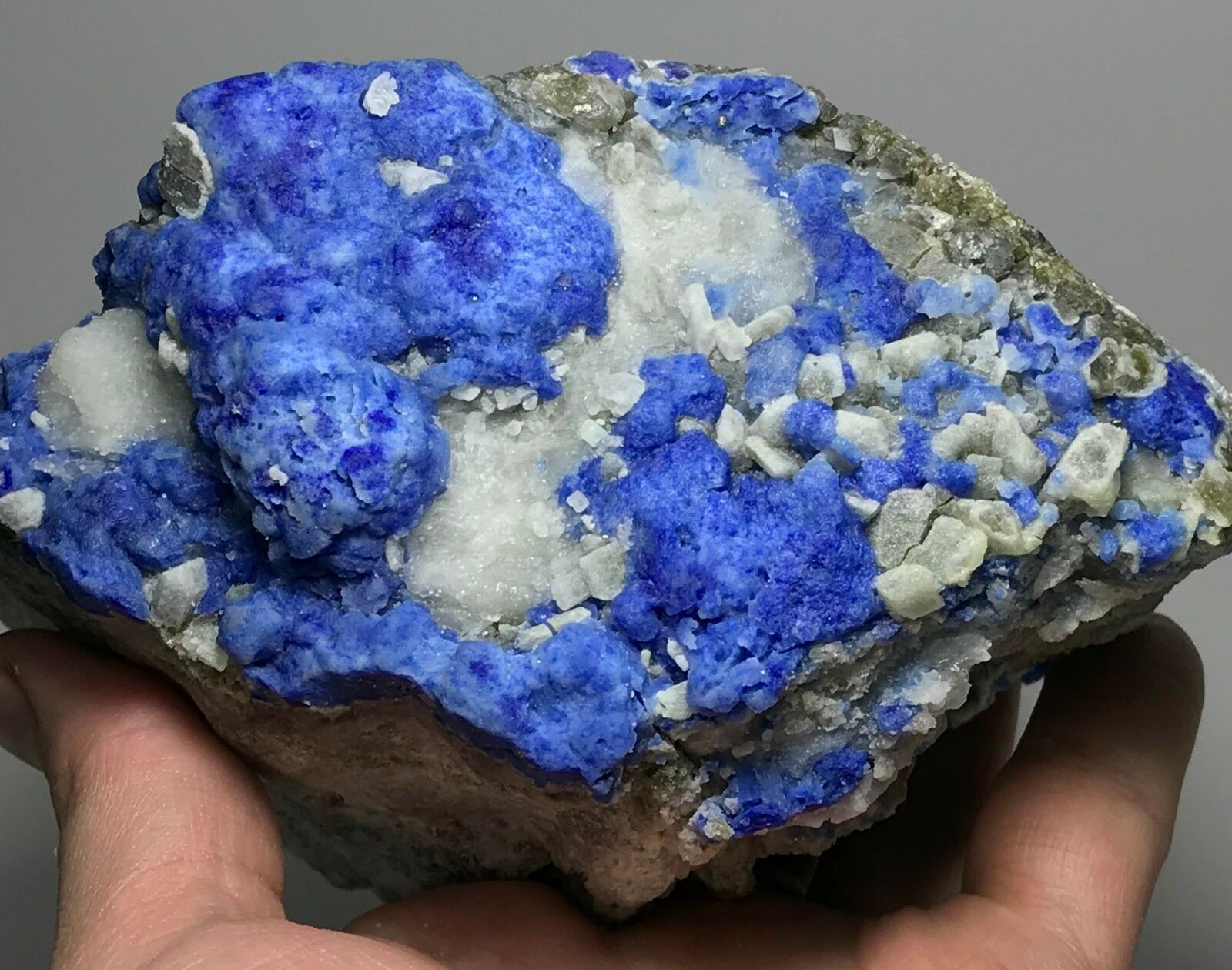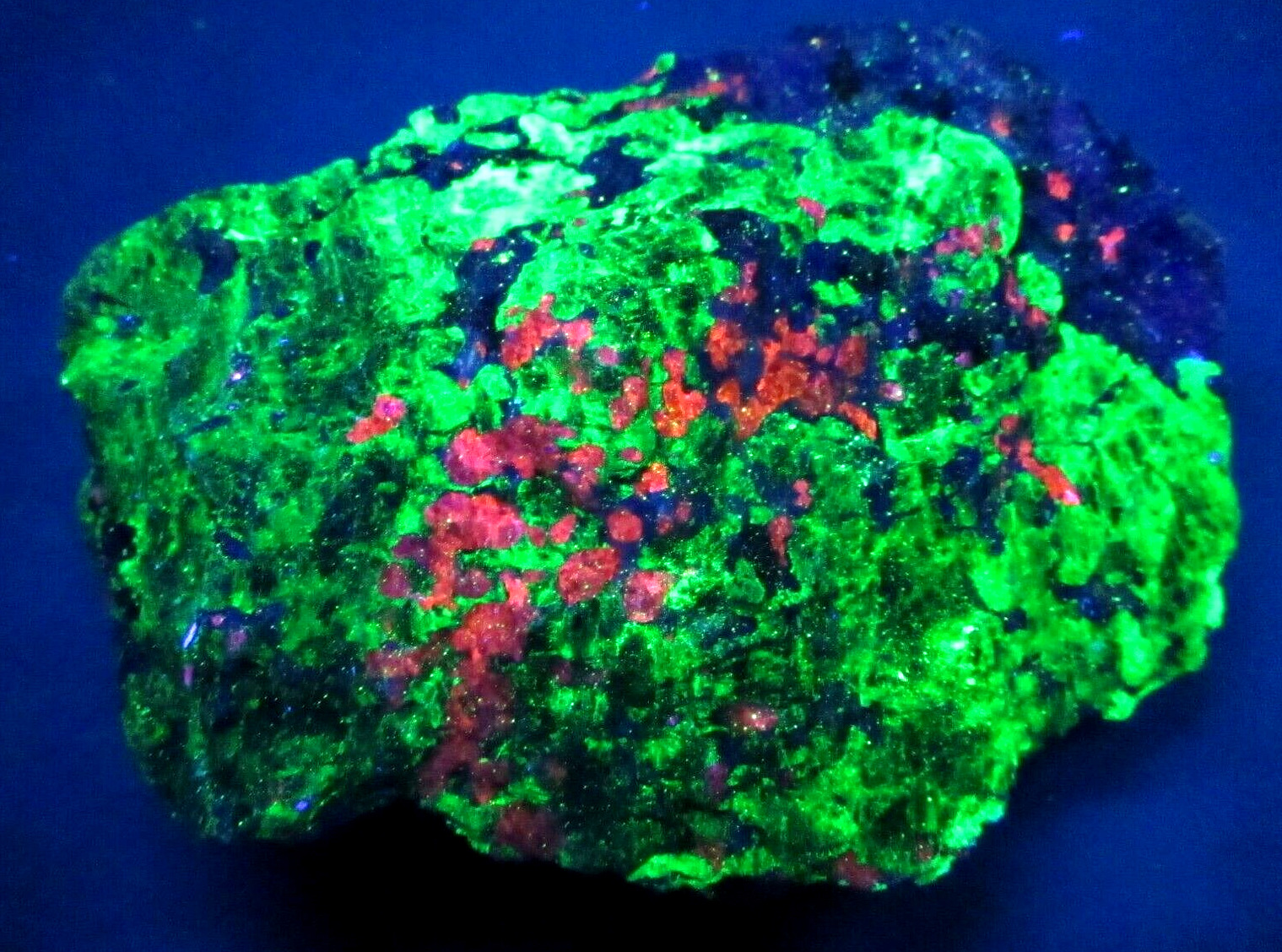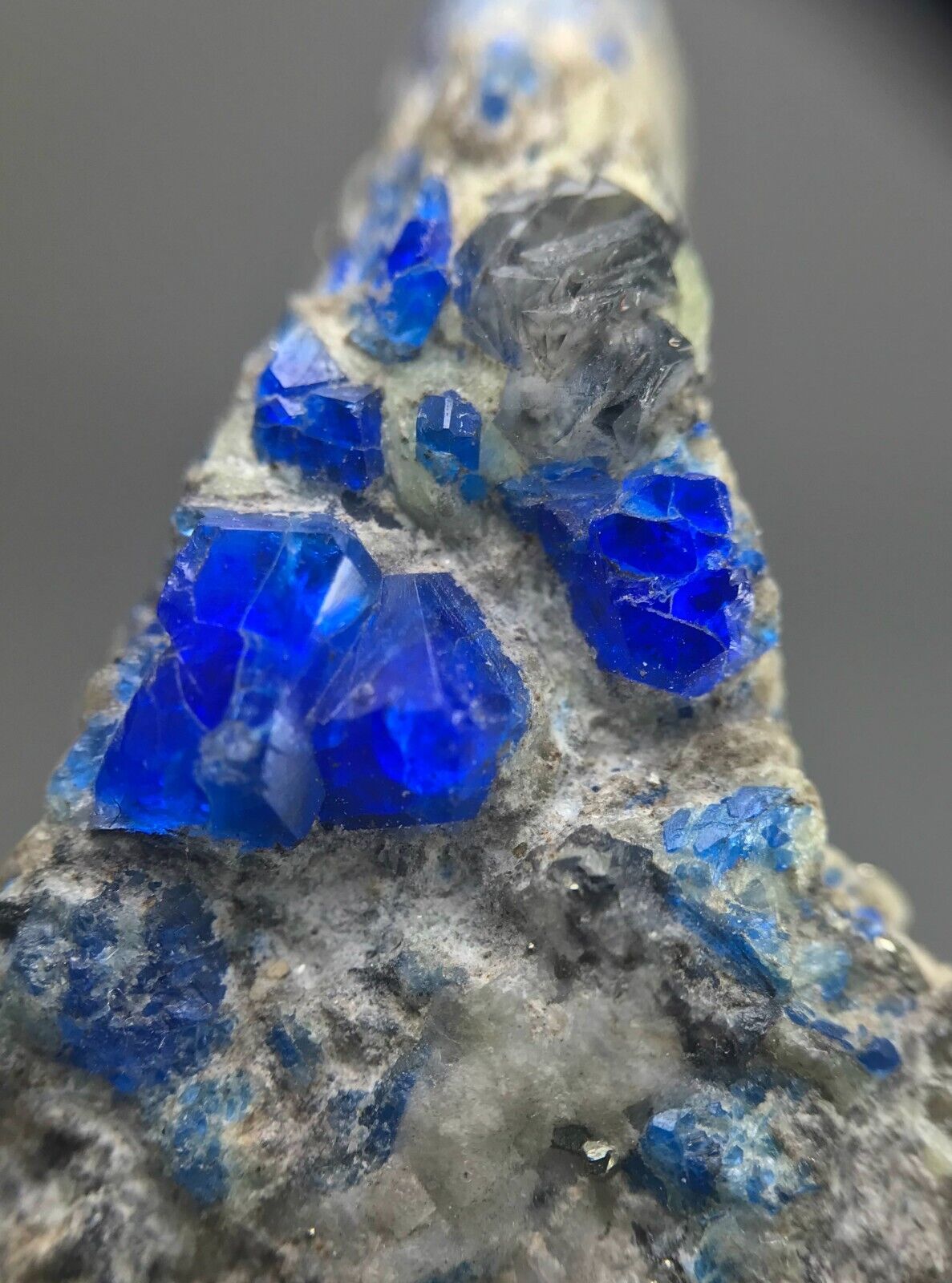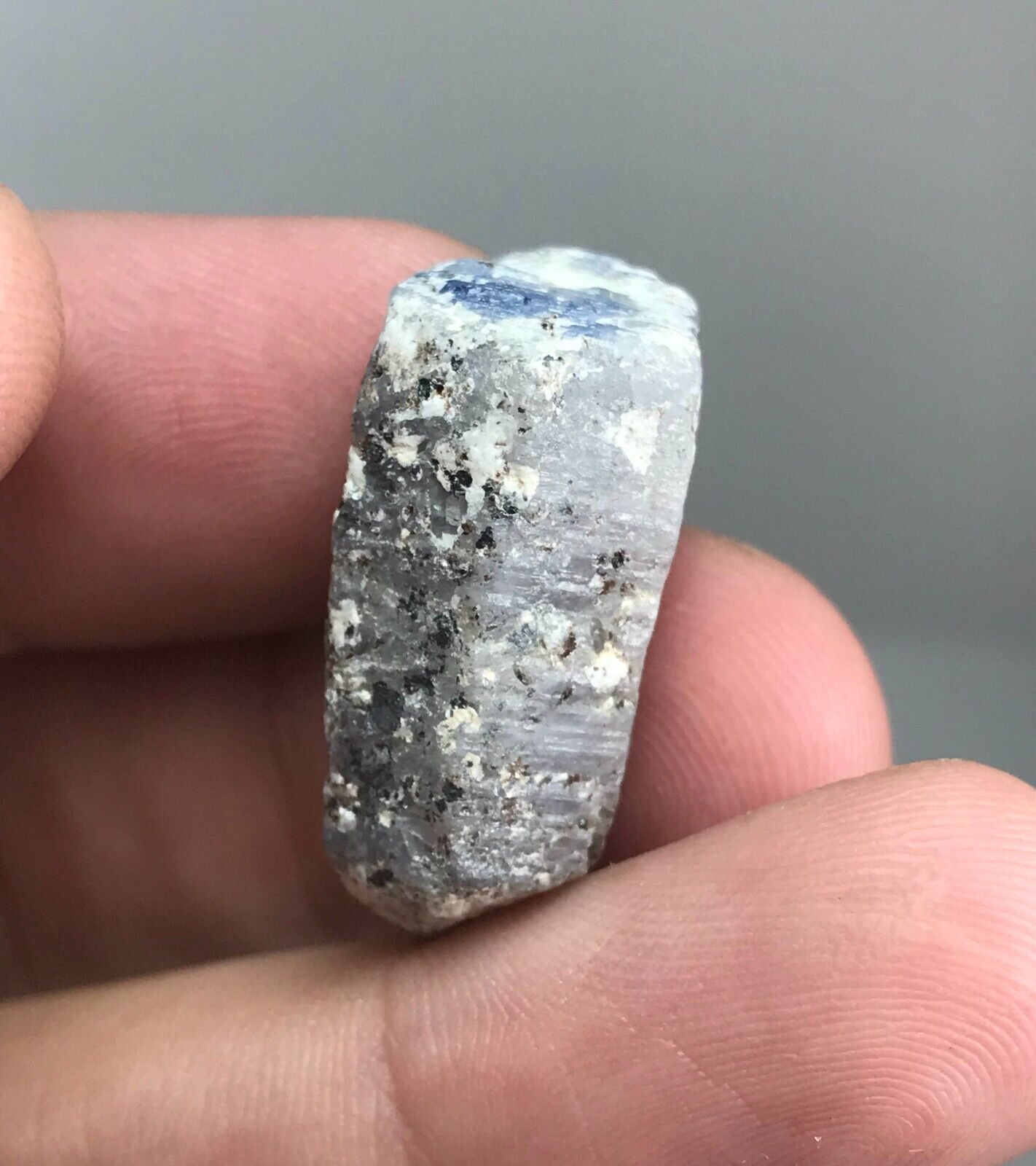-40%
Norbergite-chondrodite - Franklin, NJ
$ 2.64
- Description
- Size Guide
Description
An example of norbergite-chondrodite. These two species, members of the humite group, are magnesium-bearing silicates with fluorine. It is nearly impossible to distinguish between the two species visually. There is a local rule of thumb that said if the color is dark orange and fluoresces poorly, it is chondrodite, and if it is lighter in color and fluoresces brightly, it is norbergite. This is very unreliable and not the definitive identification method in determining the exact species.Needless to say, this is a very rich example of a humite group mineral. The species occurs here as large, sub-vitreous, yellow-orange grains and sections scattered throughout the matrix. It does, in fact, fluoresce a yellow-orange color under shortwave (254nm) ultraviolet light. The matrix is coarse white to gray calcite, also known as the Franklin Marble, the host rock of the famous Franklin-Sterling Hill zinc ore deposits. There are minor grains of metallic, gray graphite. Even without the zinc deposits at Franklin and Sterling Hill, the Franklin Marble would be a well-known mineral locality in its own right. Norbergite/chondrodite is one of the more common mineral species to occur in the marble, of which there are as many as 50 species. The Franklin Marble is classified as a metasedimentary deposit and dates to 1.1 billion years old.
Dimensions are
6.1x4.4x5.3cm - 2½x1¾x2in.
Please note the centimeter cube and inch bar for scale.
Weight in grams and ounces:
73.7g - 2.60oz.
From the
Franklin Marble quarry, Franklin, NJ.
The previous collection this specimen was is #67, Phamily Minerals.
#67 is the museum's Collection Sale number previously offered in the museum shop.
>>> We do
COMBINED SHIPPING
for multiple items. To
request
an invoice from us that combines shipping
ALWAYS
, click the
Add to cart
button on eBay to add items until you are done.
DO NOT PROCEED
to checkout; instead, click the
Request Total from Seller
button. <<<
=== There is an instructional video on how to request combined shipping is here
https://www.youtube.com/watch?v=FvDe7Fg7R4Q
===
All potential buyers need to be aware that being able to view fluorescent minerals requires an ultraviolet lamp. Most of the minerals from the Franklin and Sterling Hill zinc mining district fluoresce under
shortwave ultraviolet light
.
The shortwave wavelength is
254nm
or otherwise known as
UV C
. Always read the description carefully to determine if the main mineral of interest for a particular specimen will fluoresce.
ALL
fluorescent minerals depicted in our storefront are illuminated by two (2) 9 watt Triple short/mid/longwave AC Model 9SM-110 Way Too Cool LLC ultraviolet lamps, and the shortwave tubes and filters were replaced in late 2018.
There are several available brands and models of ultraviolet lights on eBay and other online sources. For further information on ultraviolet light and fluorescent minerals, copy and paste the following and go to >>>
geology.com/articles/fluorescent-minerals
.
>>>>
We Buy Collections
<<<<
DISCLAIMER: Every reasonable effort was made to identify the mineral species noted in each specimen accurately. The occasional label from previous collection(s) may misidentify some species, and the current title and description here reflect the latest mineral species identification.
A modest effort was made to depict a fluorescent specimen accurately as possible.
In some cases, overexposure should be expected in select photographs to compensate for a fluorescent specimen's weak response.
All buyers should exercise safe viewing practices regarding the use of ultraviolet light. Visual dark adaption is highly recommended in the optimal viewing of fluorescent minerals. Buyers should also be aware of what type of lighting to view the specimens under. This can result in perceived differences of color and contrast due to color and contrast shifting under various kinds of lights available.
All photographs were taken with a Nikon D5300 digital camera with a Nikon DX AF-S 18-55mm lens attached with a UV filter. Lighting was done with a pair of OSRAM 8.5 watt LED A19 5000K 800 lumens bulbs in brushed aluminum reflectors. The photographs were processed on a color-calibrated flat panel monitor. Do note the Imperial measurement conversion is the nearest equivalent to the listed metric measurement.
--- All photographs appearing on this listing or any other Franklin Mineral Museum listing are the property of the Franklin Mineral Museum. Photographs
can be used strictly for personal use onl
y
. Otherwise, the photographs posted here are protected by U.S. Copyright Laws. They are not to be downloaded or reproduced for public use or distribution in any way without the written permission of the Franklin Mineral Museum. ---
